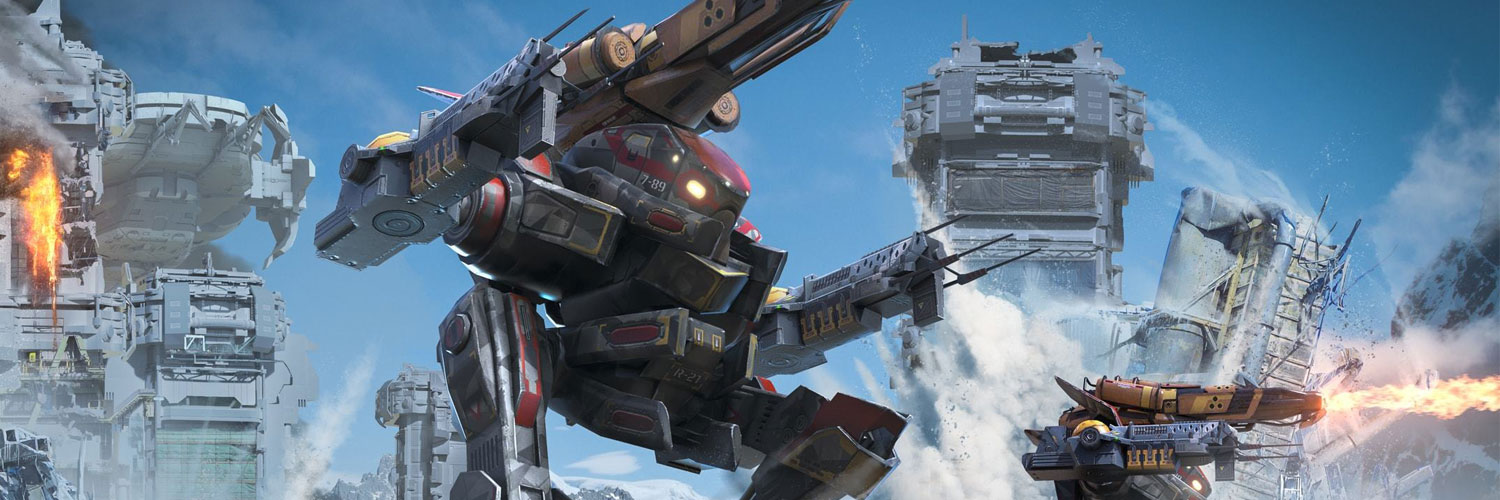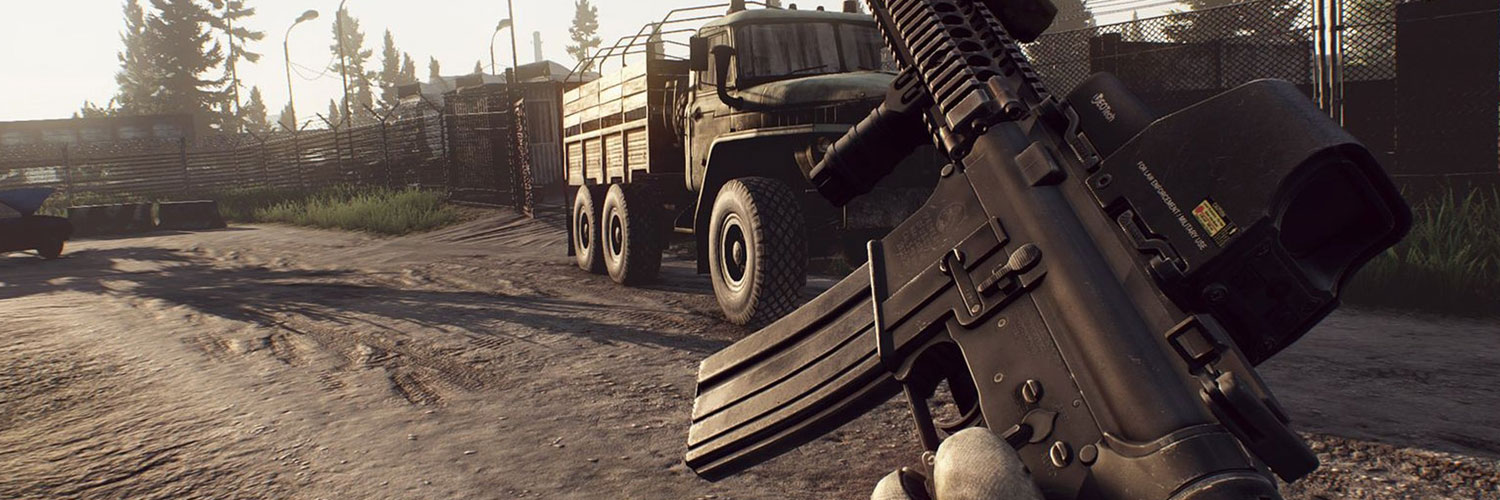Five teams involved in online projects told App2Top.ru how does the toxicity of gamers affect the performance of games and what can be done with such an audience.
At the end of March, 30 teams, including Blizzard and Riot, joined the Fair Play Alliance. One of the goals of the group is to solve the problem of toxicity in games. The formation of the alliance took place against the background of the rapid implementation of new tools aimed at reducing toxicity in Sea of Thieves and Fortnite. We asked Pixonic, Wargaming, Overmobile, Aigrind and Battlestate Games if this problem is really that serious.
Is the problem of toxic communities in games that serious?

Alexey Biryukov, Head of the Pixonic Community Department
As serious as it is visible. The degree of toxicity is determined by a lot of criteria — from the mood at the time of the game to the mentality. In some games there is more of it (mostly competitive), in others there is less, but the bottom line is that one toxic user (hereinafter referred to as TP) is able to incline an entire group of players to aggression, after which a chain reaction occurs.
If the possibility of trolling is inherent in the game itself, it will certainly be banned. Add friendly fire to the game — and there will be those who will take it out on teammates. You do not need to go far, here is an example from the fresh Sea of Thieves:
Such a meeting with a "nubhunter" potentially defines a beginner's gaming experience — one can only hope that he will perceive it as a challenge.
But this can happen not only in the game itself. It's one thing to have a one—on-one vine during gameplay, it's quite another to have fan groups, communities and public sites. If the TP sees an opportunity to make a louder statement about himself, he will do it. And the louder the better.
How familiar are you with this situation: your team loses → one teammate puts the blame on you → it seems to you that anyone is to blame, but not you → the next one becomes the culprit.
The point of no return comes when TP enters the stage of awareness, when toxicity becomes a manner and even a goal of communication, a kind of emotional vampirism. This is how a troll is born, a real scourge of any community, maneuvering on the edge of what is permissible and provoking everyone to conflict.

Ilya Botyanovsky, a leading specialist in the department of interaction with players of the World of Tanks Blitz project
Very much: the largest game developers, including Wargaming, pay attention to it. Whole departments are dealing with the problem, and large resources are being spent on solving it — as well as on developing new methods of countering it.
The problem of toxic communities is especially relevant for games where teamwork is needed to win. All our major projects belong to such games. We know that some players often blame other team members and/or game developers for the failures. They speak out about it in a harsh way, and the rest are faced with a choice: either respond with aggression to aggression, or endure.
The level of toxicity must be kept under control. If the toxicity is ignored, the consequences for the project will be deplorable. It is critically important to monitor the atmosphere in the community and be a part of its life.

Sergey Guselnikov, Head of Overmobile Support Service
The problem is actually quite serious. The more the gaming community grows in a single game, the more likely it is that isolated groups of toxic players will appear.
It should also be noted that, in my experience, players from Eastern Europe, Russia and the CIS are much more toxic than players from Western Europe, Asia and America. This is influenced by the general standard of living and the real structure of society as such in specific countries.

Stanislav Ignatov, Aigrind Public Relations Manager
The problem of community toxicity is primarily a player safety issue. It should be taken as seriously as data security. The value of the community depends on the genre of the game and the higher it is, the more responsibly you need to monitor its condition. Unfounded negative opinions about the game, insults or harassment of players will never benefit the project.

Nikita Buyanov, COO of Battlestate Games Studio
Toxic users can be dangerous at certain stages of game development/revamp. They can bring unnecessary turmoil to anyone through all kinds of provocations. Often, such a user intentionally "poisons" others in order to realize their non-conformist views and to somehow assert themselves. In the early stages, when it is necessary to recruit strong and reliable allies in the community, toxic users can seriously interfere with this process. Therefore, they need to be fought and, first of all, not by bans.

How does audience toxicity affect the performance of the game?

Alexey Biryukov, Head of the Pixonic Community Department
The worst case scenario is if the toxicity has reached the brand. Behind it lies a reputation and a direct link to the trust of customers.
But if we talk about the local level, then everything depends on the project. Let's say this is an MMORPG with an emphasis on socialization (not the most relevant genre, but a good example). The scenario could be something like this: I like this game → I want to discuss it → toxicity prevails in the community → I don't like discussing it → I don't like this game so much anymore.
At best, the user will continue to play without participating in the life of the community, at worst, he will stop playing and try to warn others. Someone will get to the assessment, directly affecting the attractiveness of the project page.
In fairness, it is worth noting that there will always be a category of people who will continue to actively play, despite all the toxicity, in order to punish offenders sooner or later. But in practice, this rarely happens.
As for War Robots players, they often turn to the community to decide on purchases. It gets to the point where they collect the basket together with the commentators. It is important for us that the player receives constructive advice, and not sarcastic comments about lack of experience or solvency.

Ilya Botyanovsky, a leading specialist in the department of interaction with players of the World of Tanks Blitz project
The first type of toxicity (aggression directed at developers) affects project performance indirectly. For example, due to the man-hours spent on adding features that are not always necessary for the game. With poorly established communication, it happens that players are clamoring for the addition of a new feature, and the developers cannot explain to the players why it will not "take off" in this project. And they add it in the hope of improving relations, which does not happen — because players often do not use these new opportunities later.
The second type of toxicity, aimed at other players, is much worse — the developer is not a direct participant here and has fewer opportunities for control. The process goes in one direction: an experienced player → a beginner. It is difficult for the first one to realize that another member of the team is playing worse just because he installed the game two days ago. And the newcomer becomes a victim, on whom the irritation of failure is poured out.
Such situations upset the beginner, and he deletes the game. And since there are not one or two newcomers, the company suffers direct losses. Engagement decreases; the player has no desire to socialize in the project and generally spend his time on it; he does not recommend the game to friends and does not bring them into it.
We consider working with new players extremely important and try to make them feel comfortable immediately — and not only when they master the game perfectly. If we consider working with newcomers as an investment, then they always bring good dividends.

Sergey Guselnikov, Head of Overmobile Support Service
If we take our games specifically, then toxic players have an exceptionally negative impact. They create unpleasant situations and an unhealthy atmosphere, which generally affects the public image of the game, as a negative background is created around the game, and as a result, the outflow of adequate and decent users increases, and the likelihood of attracting potential new players decreases.
It is clear that there are exceptional cases, such as with the same DOTA2, where the toxicity of the audience, on the contrary, is an attractive factor. But this is an isolated case, and there is a very fine line here when the gaming community is so corrupted that it becomes a feature, and an integral element of the gameplay. Such large titles as, for example, Overwatch confirm that the toxicity of the audience in the vast majority of cases affects the game negatively.

Stanislav Ignatov, Aigrind Public Relations Manager
This can lead to serious consequences. If the toxic atmosphere is bubbling only within gaming communities, then this can happen without noticeable changes in numbers, because toxic players are often the most involved and active in the game.
But if the situation gets out of control and your average score decreases or the number of negative reviews in app stores increases because of this, this is a big and neglected problem that can easily bring down sales. This situation needs to be urgently corrected.

Nikita Buyanov, COO of Battlestate Games Studio
Again, it all depends on whether the development/launch stage is early or not. In our case, toxic users do not affect the indicators, there are still not so many of them.

In a situation where the team of a young game sees the appearance of a toxic community around its title, what should it do?

Alexey Biryukov, Head of the Pixonic Community Department
To bring up a counterweight and control the spread of toxicity.
I like Blizzard solutions. In Hearthstone, the chat is available only to players who have accepted the request. In a fight with a random opponent, only preset, positive emoticons are available, which can also be disabled. In Overwatch, chat can be disabled, and communication can be carried out by hot teams, a set of which is controlled by the developer. Well, for every angry post on their forum, there will be a counterweight in the form of brand defenders.
I'm not calling for limiting the socialization of players, but rather saying that there should always be a choice. You can never completely rid the community of toxicity. But you can give the player the opportunity to protect themselves from TP and surround them with friendly allies.
Study the toxic audience, find out what unites them, so you will find the root cause, and the solution will come by itself.

Ilya Botyanovsky, a leading specialist in the department of interaction with players of the World of Tanks Blitz project
Protect beginners from interacting with experienced players in the early stages. Do your best to help them take their first steps. Fight with bots or players of the same level. Organize various activities that teach basic game techniques and winning tactics. Create a filtering system for chats. Let the in-game chat work only within the team, profanity is blocked, standard provocative phrases are automatically replaced with thanks, and so on.
Add the "Complain" button to a prominent place. The player must be able to tell the developer about the toxic behavior and take part in punishing the culprit.
Build communication; make sure that your project has a healthy community from the very beginning. Be friends with the players, explain, listen, be correct, help people reveal their best features — but react in a timely manner to aggression and unjustified negativity. Without starting the problem, you will solve it with minimal cost. All this is very important for the success of a young project, because the "windows of opportunity" are closing quickly, and resources are limited.

Sergey Guselnikov, Head of Overmobile Support Service
When a toxic community is formed (and it will arise in any case), it is necessary to observe how the rest of the gaming audience treats the manifestations of toxicity, and act in accordance with the results of these observations. But, as I mentioned, in the vast majority of cases, toxicity will negatively affect the game. Therefore, we must strive to nip any of its manifestations, preferably in the bud.

Stanislav Ignatov, Aigrind Public Relations Manager
Toxicity is a very contagious thing, and even if you manage to curb the most toxic players, new ones will quickly grow in the atmosphere they create. The best tool to combat such an atmosphere is brand advocates from among the players and openness on the part of the developers themselves. The most banal things work: always encourage balanced opinions and healthy discussions, participate in them yourself, show an example of behavior and strictly prevent conflicts.

Nikita Buyanov, COO of Battlestate Games Studio
As I said in the first paragraph, we must fight. First of all, you need to have competent community managers who, with the help of key fans, should clarify, enter into disputes and dispel everything that toxic users say. It often happens that toxic users are right about a specific problem, they just can't stop and try to attract as many other users to the problem as possible, with the implication "everything is bad". In such places, it is necessary to deliver targeted "strikes" — to communicate with them, to prove them wrong, the inconsistency of their ideas.

How do you solve the problem of toxic players appearing in your game?

Alexey Biryukov, Head of the Pixonic Community Department
- Our chat is available only to users united by interests — in clans and platoons (parties).
- There are no ways to prevent allies except inaction. And inaction is automatically punished.
- In combat, both personal and team merit are encouraged to motivate.
I can't say that there is no toxicity in our communities. But there are no fewer players who want to extinguish the negative on their own.
There was a case when the Facebook page was filled with angry posts about unsuccessful fights and then a group of players created the Cry & whine zone group to remove the unconstructive negativity from the field of view of others. In such a situation, there is not a conflict, but a dialogue within the community.
Remember — in any community there will be people who advocate comfortable play and against toxicity. It remains to find them and help them be heard.

Ilya Botyanovsky, a leading specialist in the department of interaction with players of the World of Tanks Blitz project
We had a toxicity issue when the game had been around for quite a long time.
We use classic tools — chat filters, a complaint system, and so on — and develop new ones. We realize that it is completely impossible to eradicate the problem. But eternal vigilance (and quick reaction) help minimize toxicity.
We always remember that the majority of players capable of displaying toxic behavior are the people most involved in the project. They love your game as much as you do. Because of their age or temperament, it is more difficult for them to restrain emotions and not to offend a beginner on the course. When solving the problem of toxicity, keep a balance: do not infringe on players who have been with you for a long time and sometimes just overreact. Understanding the audience and the desire to help them are the most important components not only in the fight against toxicity, but also in solving many other tasks of your project.
We are fighting not only the manifestations of toxicity, but also its causes. World of Tanks Blitz is a very team game, and our audience is very annoyed by AFK players: people who go into battle and do nothing, reducing the probability of victory for "their own". We have conducted the necessary research and developed metrics that help us limit such players. Now we are conducting weekly checks and, based on their results, we isolate players who break the gameplay to others.

Sergey Guselnikov, Head of Overmobile Support Service
We act quite harshly and try to isolate toxic users from other players: we ban and block them. Conscious help from adequate players who love the game and are interested in maintaining a healthy atmosphere in the game helps here. Unfortunately, it is impossible to completely eradicate toxicity, but such measures help to significantly reduce its presence in the game, almost to a minimum level.

Stanislav Ignatov, Aigrind Public Relations Manager
We are making MMORPGs, so for us everything related to the community is a very important issue. To begin with, it is very important to note that toxic players and disgruntled players are different categories and you need to work with them in different ways. Discontent often provokes toxicity and in order to prevent this, you need to listen to the reasons, eliminate them if possible and promptly clarify the misunderstandings that arise. The consequences of misunderstanding are the easiest to eliminate.
When it comes to toxicity, even the most thorough and prompt changes are rarely beneficial, since its causes are often irrational. In this case, it is necessary to temporarily limit the activity of such players in the community by all available means. In the end, the community itself will thank you. Good companies are well aware of this and actively combat toxicity at an early stage.
Warspear Online is played by people from all over the world and the level of toxicity differs markedly in different regions. Western Europe and the USA are more loyal, while the CIS, South America and Asia can arrange a real toxic apocalypse within the community. Moderators from these regions will help prevent it: they have no problems with the language and time zones. And if you manage to recruit one of the most toxic players for this role, you will get a classic win-win, because thereby you will reduce the degree of toxicity and acquire very diligent and tireless fighters in your army.

Nikita Buyanov, COO of Battlestate Games Studio
If the opponent is not able to heed reasonable arguments, then there is only a ban. The main thing is to work quickly with toxic users and not launch this case.
If your studio is also interested in participating in such formats, write to alexander.semenov@nevosoft.ru marked "Participation in round tables". In the body of the letter, please indicate the areas in which you specialize and, from your point of view, have a high level of competence. This will help us with the selection of characters for the following materials.
